If you’re new to houseplants or struggle to keep them alive, these 7 Hard-to-Kill Houseplants Fit for Beginners are perfect for you! Not everyone has the time or experience to care for delicate plants, but that doesn’t mean you can’t enjoy the benefits of indoor greenery.
Low-maintenance houseplants are an excellent choice for beginners or busy individuals who want a touch of nature without constant upkeep. These plants are not only easy to care for but also help purify the air, enhance home aesthetics, and boost your mood.
In this guide, we’ll explore 7 Hard-to-Kill Houseplants Fit for Beginners that thrive with minimal attention. Whether you have low light, forget to water, or just want a stress-free plant experience, these resilient options will make indoor gardening effortless!
What Makes a Plant Hard-to-Kill?
Not all houseplants require constant care—some are naturally resilient and thrive even with minimal attention. But what exactly makes a plant hard-to-kill? Here are the key traits that define these low-maintenance, beginner-friendly houseplants:
1. Drought Tolerance
One of the most important qualities of a hard-to-kill houseplant is its ability to survive with little water. Many resilient plants store moisture in their leaves, stems, or roots, allowing them to withstand dry periods without wilting. This makes them ideal for forgetful plant owners or those with a busy schedule.
2. Low Light Adaptability
Not every home or office has access to bright, direct sunlight. The best hard-to-kill houseplants fit for beginners can thrive in low to moderate light conditions, making them perfect for shaded corners, apartments, and indoor spaces with limited natural light.
3. Pest Resistance
Some plants naturally repel pests or are less susceptible to infestations. Hardy houseplants often have thick, waxy leaves or natural compounds that deter common plant pests like spider mites and aphids. This means fewer worries about plant health and less need for chemical treatments.
4. Minimal Maintenance Requirements
A true hard-to-kill houseplant doesn’t require constant pruning, misting, or special care. These plants grow well with basic watering, occasional fertilizing, and minimal attention, making them ideal for beginners who are still learning about plant care.
By choosing plants with these traits, you can enjoy the beauty of indoor greenery without the stress of high-maintenance care. Now, let’s explore the 7 Hard-to-Kill Houseplants Fit for Beginners that you can easily grow at home!
Benefits of Hard-to-Kill Houseplants for Beginners:
If you’re new to indoor gardening, choosing hard-to-kill houseplants is the best way to enjoy greenery without the stress of complicated care routines. These plants offer more than just convenience—they bring a range of benefits to your home and well-being. Here’s why 7 Hard-to-Kill Houseplants Fit for Beginners are a great choice:
1. Low Maintenance and Easy to Care For
The biggest advantage of hard-to-kill houseplants is their ability to thrive with minimal attention. They don’t require frequent watering, pruning, or special lighting conditions, making them ideal for beginners or those with busy schedules.
2. Improve Air Quality
Many hard-to-kill houseplants act as natural air purifiers by filtering out toxins and increasing oxygen levels. Plants like the Snake Plant and Spider Plant help remove pollutants, creating a healthier indoor environment.
3. Boost Mood and Productivity
Research shows that being around plants can reduce stress, improve focus, and enhance overall mood. Even a simple, easy-care plant on your desk can make your workspace feel more inviting and increase productivity.
4. Perfect for Busy Lifestyles or Forgetful Plant Owners
If you tend to forget to water your plants or travel frequently, hard-to-kill houseplants fit for beginners are the perfect solution. Their ability to survive in less-than-ideal conditions means you don’t have to worry about them dying if you neglect them for a few days—or even weeks!
By adding 7 Hard-to-Kill Houseplants Fit for Beginners to your space, you can enjoy all the benefits of indoor plants without the hassle of high-maintenance care. Now, let’s explore the best beginner-friendly plants you can bring home today!
1. Rex Begonia Vine (Cissus discolor)
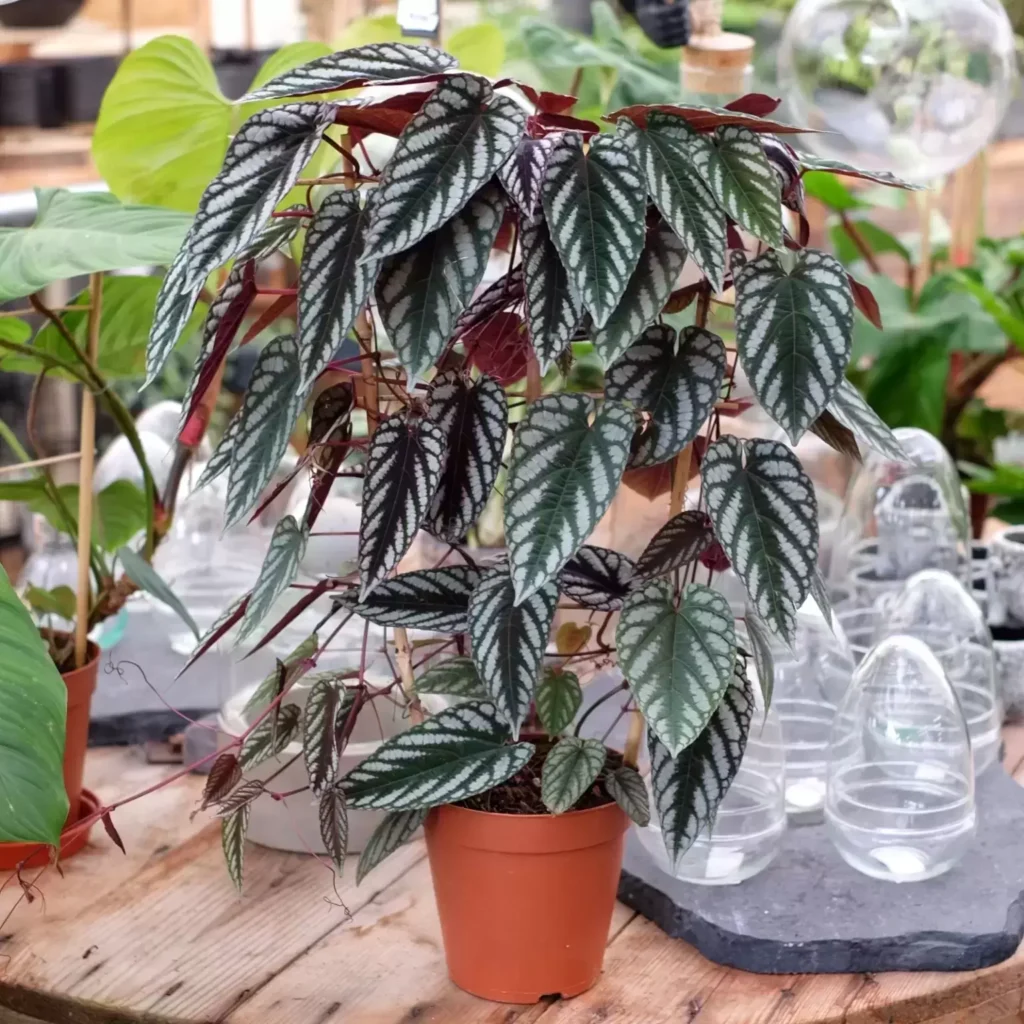
The Rex Begonia Vine (Cissus discolor) is a stunning yet hard-to-kill houseplant fit for beginners, thanks to its resilience and adaptability. This trailing vine adds an elegant touch to any indoor space with its velvety green leaves and silvery patterns.
Why Rex Begonia Vine is Hard-to-Kill?
- Thrives in Moderate to Low Light – Unlike many trailing plants that demand bright light, the Rex Begonia Vine adapts well to indirect or shaded conditions, making it perfect for apartments and offices.
- Tolerates Occasional Drought – While it prefers consistent moisture, it can handle occasional dry spells, making it ideal for plant owners who sometimes forget to water.
- Striking Trailing Foliage – With its vibrant, heart-shaped leaves and deep purple undersides, this plant is a showstopper that requires minimal effort to maintain.
Care Tips for Rex Begonia Vine:
- Water when the top inch of soil feels dry.
- Provide well-draining soil to prevent root rot.
- Keep in a warm, humid environment for optimal growth.
With its low-maintenance nature and breathtaking foliage, the Rex Begonia Vine is one of the best hard-to-kill houseplants fit for beginners. Whether you want a statement piece for a shelf or a cascading vine for a hanging basket, this plant is a great choice!
2. Black-Eyed Susan Vine (Thunbergia alata)
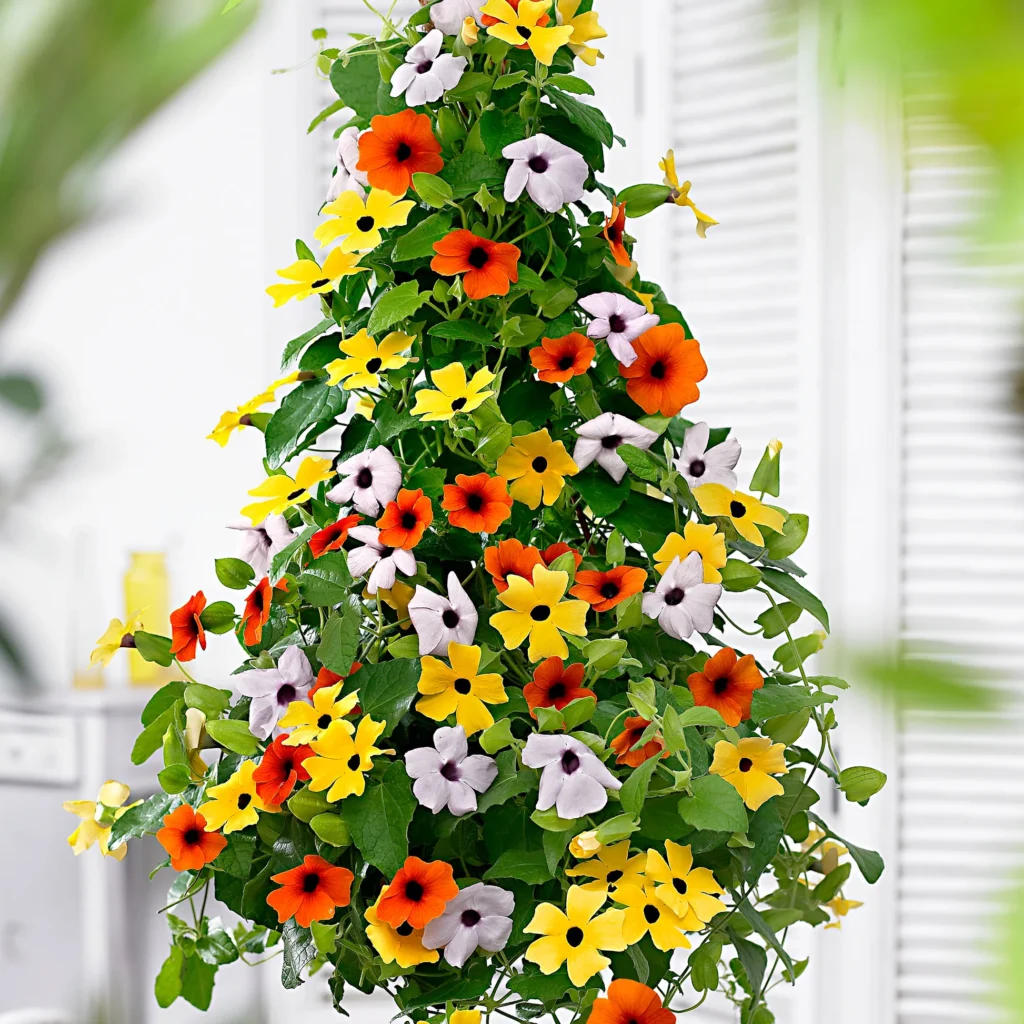
The Black-Eyed Susan Vine (Thunbergia alata) is a hard-to-kill houseplant fit for beginners, thanks to its adaptability and fast-growing nature. Known for its cheerful, vibrant flowers, this vine brings a pop of color to any indoor space with minimal effort.
Why Black-Eyed Susan Vine is Hard-to-Kill?
- Fast-Growing and Adaptable – This vigorous vine quickly fills out trellises, hanging baskets, or shelves, making it an excellent choice for those who want lush greenery without a long wait.
- Produces Vibrant Flowers with Minimal Care – With bright yellow, orange, or white blooms featuring a distinctive dark center, this plant flowers profusely even with basic care.
- Tolerates a Variety of Indoor Conditions – Whether placed in bright indirect light or moderate sunlight, the Black-Eyed Susan Vine adapts well, making it easy to grow in different indoor environments.
Care Tips for Black-Eyed Susan Vine:
- Place in bright, indirect light for best flowering.
- Keep the soil slightly moist but not waterlogged.
- Provide a small trellis or support to encourage climbing.
With its stunning flowers and easy-care nature, the Black-Eyed Susan Vine is a fantastic hard-to-kill houseplant fit for beginners. Whether you grow it as a trailing or climbing plant, it will reward you with beauty and resilience!
3. Rosary Vine (Ceropegia linearis subsp. woodii)
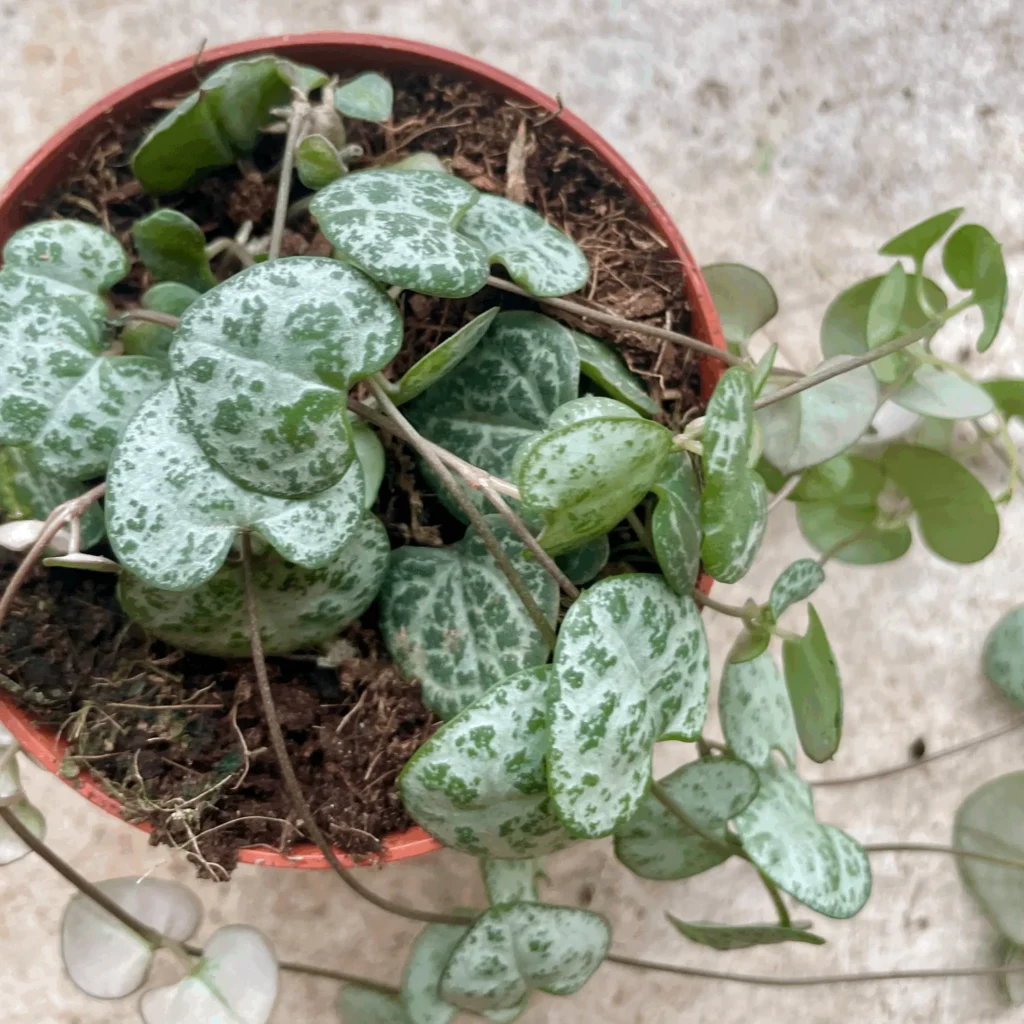
The Rosary Vine (Ceropegia linearis subsp. woodii), also known as String of Hearts, is a delicate-looking yet surprisingly hard-to-kill houseplant fit for beginners. With its cascading vines of heart-shaped leaves, this plant is perfect for hanging baskets or shelves, adding elegance to any space with minimal care.
Why Rosary Vine is Hard-to-Kill?
- Hardy Trailing Plant with Heart-Shaped Leaves – Despite its delicate appearance, this vine is incredibly tough and can thrive even with neglect.
- Can Handle Infrequent Watering – As a semi-succulent, the Rosary Vine stores moisture in its stems and tubers, making it highly drought-tolerant.
- Low Maintenance and Thrives in Bright, Indirect Light – This plant grows best in bright, indirect sunlight but can also adapt to moderate light conditions, making it versatile for different indoor spaces.
Care Tips for Rosary Vine:
- Allow the soil to dry out completely between waterings.
- Use well-draining soil to prevent root rot.
- Trim occasionally to encourage fuller growth.
With its unique trailing vines and effortless care, the Rosary Vine is an excellent hard-to-kill houseplant fit for beginners. If you love low-maintenance, eye-catching plants, this one is a must-have for your collection!
Related Topics:
15 Shower Plants That Actually Thrive In Humidity: Love the Steam!
4. Silver Vase Plant (Aechmea fasciata)
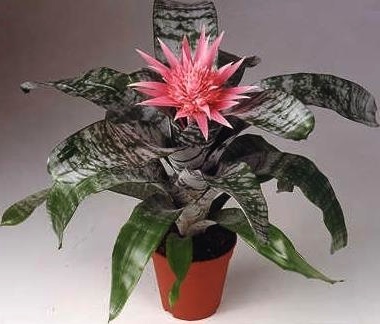
The Silver Vase Plant (Aechmea fasciata) is a striking bromeliad that proves even exotic-looking plants can be easy to care for. With its stunning silver-green foliage and unique pink bloom, this resilient plant is a perfect hard-to-kill houseplant fit for beginners.
Why Silver Vase Plant is Hard-to-Kill?
- A Type of Bromeliad with Stunning Silver-Green Foliage – Its stiff, arching leaves give it a sculptural appearance, adding a tropical touch to any space.
- Requires Minimal Watering—Absorbs Moisture from the Air – This plant takes in water through its central “vase” and leaves, meaning it doesn’t need frequent watering like most houseplants.
- Can Thrive in Indirect Light for Years – The Silver Vase Plant adapts well to bright, indirect light and can live for years with little care, making it perfect for beginners.
Care Tips for Silver Vase Plant:
- Keep water in the central cup (vase) and change it regularly.
- Water the soil sparingly to avoid root rot.
- Place in bright, indirect light for the best growth.
With its bold, architectural beauty and effortless care routine, the Silver Vase Plant is an excellent hard-to-kill houseplant fit for beginners. If you’re looking for a statement plant that requires minimal effort, this bromeliad is a perfect choice!
5. Wavyleaf Sea Fig (Ficus aspera)
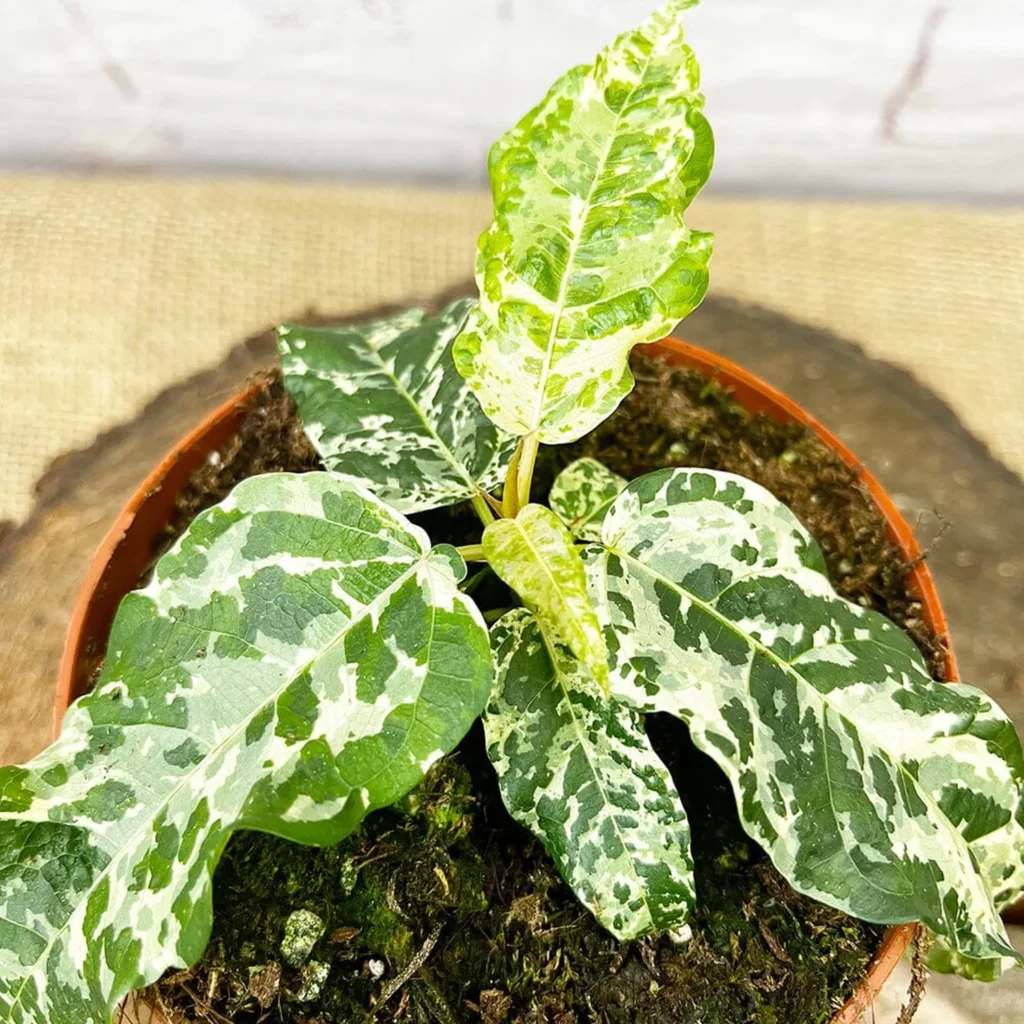
The Wavyleaf Sea Fig (Ficus aspera) is an eye-catching yet hard-to-kill houseplant fit for beginners. With its uniquely wavy-edged leaves and speckled patterns, this plant adds texture and visual interest to any indoor space while requiring minimal maintenance.
Why Wavyleaf Sea Fig is Hard-to-Kill?
- Unique Wavy-Edged Leaves with Speckled Patterns – Its distinctive foliage makes it a standout in any houseplant collection.
- Can Tolerate Low Light and Inconsistent Watering – Unlike many other ficus varieties, this one adapts well to different lighting conditions and won’t suffer if you occasionally forget to water it.
- Hardy and Adaptable to Indoor Conditions – The Wavyleaf Sea Fig is resilient and thrives in standard household humidity and temperatures, making it perfect for beginners.
Care Tips for Wavyleaf Sea Fig:
- Water when the top inch of soil is dry.
- Place in bright, indirect light, but it can tolerate lower light levels.
- Wipe the leaves occasionally to keep them dust-free.
With its striking foliage and low-maintenance care, the Wavyleaf Sea Fig is an excellent hard-to-kill houseplant fit for beginners. If you’re looking for a plant that’s both unique and easy to care for, this ficus is a fantastic choice!
6. African Spear Plant (Sansevieria cylindrica)
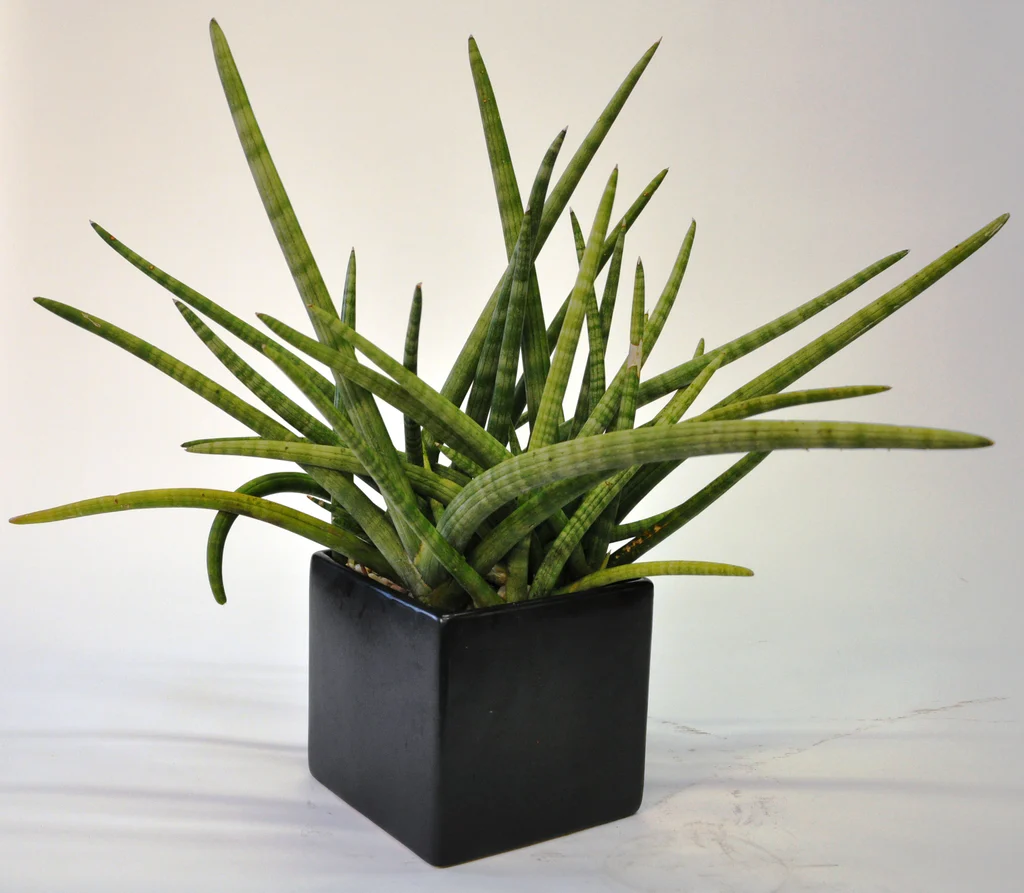
The African Spear Plant (Sansevieria cylindrica) is a striking, architectural houseplant that’s practically indestructible. As a close relative of the popular snake plant, it’s one of the easiest and most hard-to-kill houseplants fit for beginners, thriving in almost any indoor environment.
Why African Spear Plant is Hard-to-Kill?
- A Relative of the Snake Plant with Upright, Cylindrical Leaves – Its sleek, spear-like leaves grow in an elegant, vertical form, making it a stylish addition to modern interiors.
- Extremely Drought-Tolerant—Can Go Weeks Without Water – This plant stores water in its thick leaves, allowing it to survive long periods of neglect.
- Thrives in Both Bright and Low-Light Conditions – Whether placed in a sunny spot or a dimly lit corner, the African Spear Plant adapts effortlessly, making it perfect for beginners.
Care Tips for African Spear Plant:
- Water only when the soil is completely dry—typically every few weeks.
- Place in bright, indirect light for faster growth, but it will also tolerate low light.
- Use a well-draining soil mix to prevent root rot.
With its bold, sculptural shape and ability to withstand neglect, the African Spear Plant is a fantastic hard-to-kill houseplant fit for beginners. If you want an easy-care plant that thrives on minimal attention, this is the perfect choice!
7. Turtle Vine (Callisia repens ‘Pink Lady’)
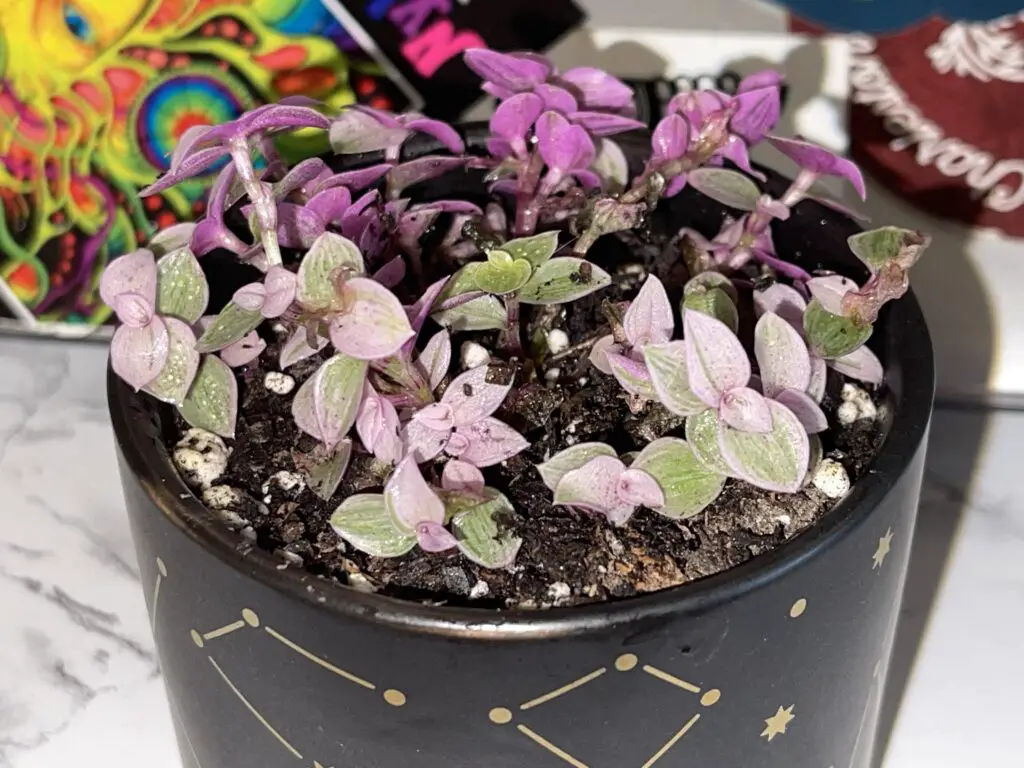
The Turtle Vine (Callisia repens ‘Pink Lady’) is a stunning, fast-growing trailing plant that brings a pop of color to any indoor space. With its delicate pink and green variegation, this low-maintenance beauty is one of the best hard-to-kill houseplants fit for beginners.
Why Turtle Vine is Hard-to-Kill?
- Fast-Growing, Trailing Plant with Pink and Green Variegation – Its cascading vines make it perfect for hanging baskets or as a trailing accent on shelves.
- Tolerates Occasional Neglect and Adapts to Different Light Levels – Whether placed in bright, indirect light or a slightly shaded spot, this resilient plant continues to thrive.
- Easy to Propagate and Maintain – Simply snip a stem and place it in water or soil to grow new plants effortlessly!
Care Tips for Turtle Vine:
- Water when the top inch of soil is dry—avoid overwatering.
- Place in bright, indirect light for the best variegation, but it can adapt to lower light.
- Trim regularly to encourage bushier growth and prevent legginess.
With its vibrant foliage, fast-growing nature, and easy propagation, the Turtle Vine is a must-have hard-to-kill houseplant fit for beginners. If you love colorful trailing plants that require minimal effort, this one is a perfect choice!
Tips for Keeping Hard-To-Kill Houseplants Thriving:
1. Avoid Overwatering
- Check the soil: Stick your finger about an inch into the soil—if it’s dry, it’s time to water.
- Use well-draining pots: Ensure your pot has drainage holes to prevent root rot.
- Follow a schedule, but adjust as needed: Water less in winter and more in active growing seasons like spring and summer.
- Pick the right soil: Use a mix that matches your plant’s needs—succulents need sandy, fast-draining soil, while tropical plants prefer moisture-retentive blends.
2. Fertilizing for Long-Term Health
- Use a balanced fertilizer: A general-purpose houseplant fertilizer (10-10-10 or 20-20-20) works for most.
- Feed during the growing season: Spring and summer are ideal; reduce or stop in winter.
- Liquid vs. slow-release: Liquid fertilizers provide quick nutrients, while slow-release pellets work over time.
- Dilute when in doubt: Over-fertilizing can lead to salt buildup, which damages roots.
3. Repotting for Better Growth
- Signs it’s time to repot: Roots growing out of drainage holes, slow growth, or water draining too quickly.
- Choose the right pot: Go up one size larger—too big can lead to overwatering issues.
- Refresh soil: Use fresh potting mix when repotting to replenish nutrients.
- Best time to repot: Spring and early summer, when plants are actively growing.
Hard-to-kill houseplants make indoor gardening effortless by thriving in a variety of conditions with minimal care. Their resilience makes them perfect for beginners, busy plant lovers, or anyone looking to add greenery without the stress of constant maintenance.
If you’re new to houseplants, starting with these foolproof options is a great way to build confidence and enjoy the benefits of indoor gardening. With just a little attention to watering, lighting, and occasional feeding, these plants will reward you with long-lasting beauty and fresh indoor air.
Do you have a favorite resilient houseplant? Share your experiences in the comments—we’d love to hear which low-maintenance plants have thrived in your home!
FAQs:
1. How often should I water hard-to-kill houseplants?
Most hard-to-kill houseplants are drought-tolerant and only need watering when the soil is dry. A good rule of thumb is to check the top 1–2 inches of soil—if it’s dry, water the plant. Overwatering is a more common issue than underwatering for beginners.
2. Can hard-to-kill houseplants survive in low light?
Yes! Many hard-to-kill houseplants, like the African Spear Plant (Sansevieria cylindrica) and Silver Squill (Ledebouria socialis), adapt well to low-light conditions. However, some may grow better in bright, indirect light.
3. Do hard-to-kill houseplants need fertilizer?
While these plants can survive without frequent feeding, occasional fertilizing (every 2–3 months during the growing season) can help them thrive. Use a balanced, diluted liquid fertilizer for best results

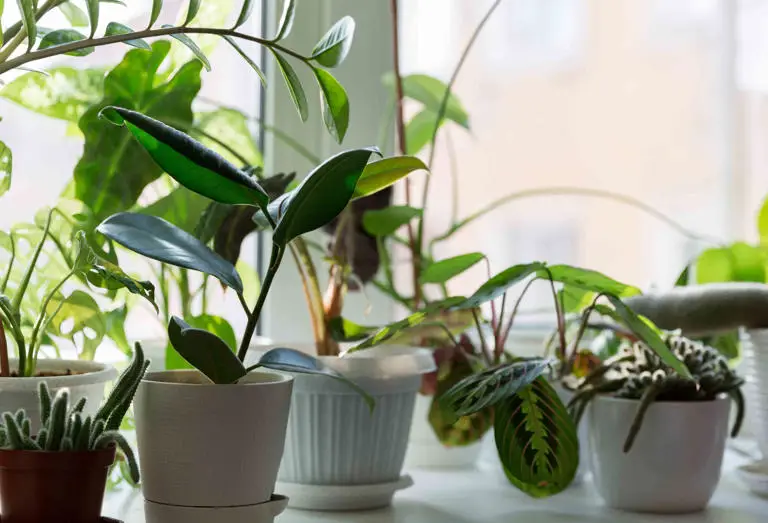
2 thoughts on “7 Hard To Kill Houseplants Fit For Beginners: Anyone Can Keep Alive!”